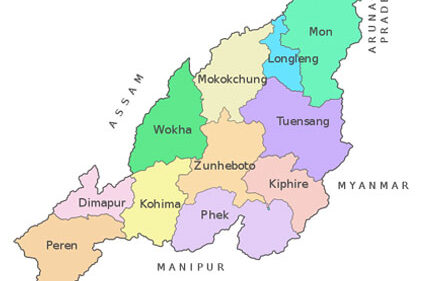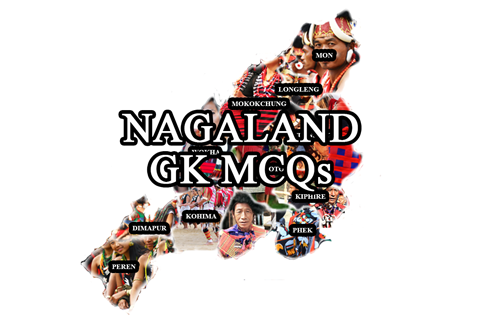Important Events in Naga History (1228 to 1900)
Here you can find some important events in Naga History. Since the list will be long, it is split into parts. Please refer to subsequent parts after you finish going through this part.
The term ‘Naga‘ is an umbrella term for several indigenous communities in North-East India and Western Burma. Nagas did not call themselves by the name ‘Naga’. It was others / outsiders who gave the name ‘Naga’. In India Nagas are found in Nagaland state of India, four Districts in Manipur, one District in Assam and two Districts in Arunachal Pradesh. In addition to this, many Nagas also inhabit Western parts of Myanmar (Burma).
The ancient history of the Nagas is unclear due to lack of documented historical record except for oral legends, folk song, and folk tales. Many theories have been put forward by historians, geographers, anthropologists and other scholars on the origin of the Nagas.
You can read more here:
1228: Nagas first encounter with the Ahoms.
- The relation between the Nagas and the Ahoms are also recorded in the BURANJIS (Ahom language: meaning, ancient writings) – historical chronicles and manuscripts associated with the Ahom kingdom.
- Ahom Chief SUKHAPA (considered the first Ahom King) entered Assam through the Naga inhabitated areas in the 13th century AD.
- In the 15th century, Naga chief KHUMBAO visited Ahom kingdom.
- Later in the same century, Ahom ruler Prince GADAPANI came to Naga Hills to seek refuge.
- Nagas and Ahom traded. The regular interactions with the Ahoms made the Naga traders learn broken Assamese to communicate for trade, which came to be known as Naga-Assamese, later known as “Nagamese“.
- Inter-marriage between the Ahoms and the Nagas are also recorded in history.
Some important events in Naga History between 1800 – 1900
1826: The British annexed Assam in 1826.
- The Ahom Kingdom maintained its sovereignty for nearly 600 years and successfully resisted the Mughal expansion in Northeast India.
- The Ahom dynasty ended with the Burmese invasion of Assam and the subsequent annexation by the British East India Company following the Treaty of Yandabo in 1826 (signed between the Brtish and the Burmese).
1832: First contact between the British and the Nagas
- First Britishers Captain Jenkins and Lieutenant Pemberton escorted by Raja Gambir Singh‘s Manipur troops traveled through the Naga areas (Angami Territory) for a strategic survey of road communication between Assam and Manipur.
1833: British under Lt. Gordon and Gambir Singh visited Naga Hills.
1835 : Formation of ‘Cachar Levy’ or presently known as ‘Assam Rifles’ – a militia to protect tea gardens and the fertile plains of Assam against unruly tribes.
1839: First British expedition to Naga Hills under Mr. Grange.
1839: First missionary to the Nagas, Rev. Miles Bronson arrived at Namsang village (Namsang is a Town and under Tirap District of present day Arunachal Pradesh)
- The first contact of the American Baptist Mission working in Assam with the Naga tribesmen was with the Tirap Nagas (Arunachal Pradesh).
- Rev. Miles Bronson established a Christian Mission Centre at Namsang village in 1839.
- In the following year, he was joined by his wife and his sister, Rhoda Bronson. They opened a Primary school, and Bronson wrote a Naga vocabulary book, a catechism, and a book called ‘Natahema Heran Kabanva Nyapran’, which is the first book to be written in a Naga language.
1840: Second British expedition to the Naga Hills under Mr. Grange.
1840 – 1842: Two more expedition to the Naga Hills under Lt. Bigge.
1845: Another expedition to the Naga Hill under Captain John Butler.
1847: First Naga baptized: Hubi
- On 12th September 1847, the first Naga was baptized by Nathan Brown at Sibsagar. His name was Hubi, but he died the following October. Another Naga, Longchangleplepzuk from Merangkong village (Ao Naga Village), was baptized by E.W. Whiting in 1851 and became a member of the Sibsagar Baptist Church.
- But when he went to his village intending to bring a wife, his village was attacked by a neighbouring Naga tribe and he was killed. The Namsang Naga Mission was abandoned for about thirty years, from 1840 to 1870, until Rev. E. W. Clark came to Sibsagar in 1869, and restarted the Naga Mission from another Naga region called Dekha Haimong or Molungkimong.(Source: NBCC)
1849 – 1850: The British invaded Naga Hills under Lt. Vincent.
1850: British seige of Khonoma and Kikruma villages.
- The first Anglo-Khonoma battle was fought at Khonoma fort in 1850
1851: British adopted the policy of non-interference (21 Feb).
1866: Creation of Naga Hills district of Assam by the Government of British India
- Naga Hills became a district of Assam Province with its headquarters at Samaguting (present day Chumukedima) under Lt. Gregory.
- The first police outpost was established in the Naga Hills at Samaguting in 1866, which was later shifted to Kohima in 1888.
1869: Rev E.W. Clark (American Baptist Mission) came to Sibsagar in 1869.
1872: First Baptist church established in the Naga Hills at Molungkimong (under present day Mokokchung district of Nagaland State) by Rev EW Clark.
1873: Inner Line Regulation issued in the Naga Hills.
1876: Headquarter of the Naga Hills District was shifted to Wokha (Lotha Area).
1876: First Baptist Mission established at Molungyimsen (Ao Area ) started by Rev. E.W. Clark.
1877: Mezoma battle between the Nagas and the British under Sir Carnegy.
1978: The headquarter of the Naga Hills District was shifted from Wokha to Kohima on 14th Nov. 1878. Wokha became a sub-division.
1879: Battle of Khonoma. (22 Nov)
1879: Rev. C.D. King was deputed to Kohima – the first missionary to the Angami Naga Tribe.
1885: Rev. D.E. Witter was sent to Wokha – the first missionary to the Lotha Nagas.
1888: The first police station was opened in Kohima, Naga Hills District of Assam.
1890: Mokokchung sub-division formed with Mr. AW Davis as SDO.
1894: Rev. E.W. Clark started Baptist Missionary Society at Impur, near Mokokchung.


